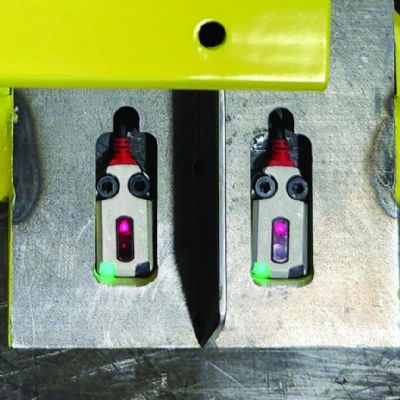 George Keremedjiev
George KeremedjievTake Time to Determine Proper Sensor Timing
August 1, 2012Comments
There is nothing quite as exciting as the “Aha!” moment that a working sensor application can provide to one’s inventive self. Those of you who implement sensors, and have experienced the hours—sometimes days of experimentation—followed by a succession of failures, can relate.
So why does it often take so much time to succeed? As one manager once said, “Surely it should not take so long to properly detect the target. Why can’t someone just write a book with all of the shortcuts and get it over with?”
Well, after writing this column for more than 28 years and having been part of thousands of sensor applications, I can categorically and unequivocally state that each and every sensor application, even within what appears to be identical dies, boils down to a series of tiny refinements, until the sensor works with the expected repeatability from stroke to stroke. Allow me to explain why.
Imagine two identical dies each housing a dozen sensors monitoring critical areas including strip feed, stripper closures, part ejection and cam return. Now kick our example up a notch and imagine these sensors working in relation to the press stroke via the timing being provided by the die-protection control system. Each sensor is expected to make its detection within a timing window. For example, consider strip feed, where the strip must be in its final position at a specific timing-angle window of the crank, in order for the sensor to detect it. Open or close that window without regard to the stopping abilities of the die and one could crash the tool. This can occur even when the die contains a very good feed-sensor mechanism. Timing, as the saying goes, is everything.
If our sample die has a twin and each die will run in two separate press systems, it is quite possible that in a typical domestic metalforming job shop the two presses will have two different feed mechanisms, different oiling devices, different shut-height adjustment procedures, different ram-parallelism settings, different tonnage-distribution forces, different brake-stopping times, different scrap removal methods, different part-blowoff systems, etc. And don’t forget, two different die setters with different levels of skill training, attitude, discipline and interpretation of the setup sheets; and operators whose predictability and repeatability can be all over the map.
Now imagine a shop that may run our two dies in six presses, rather than just two, and the situation becomes even muddier. Yes, the sensors and their installations are identical on the two dies, but the relationships between the dies and their respective presses may be totally different from setup to setup—in subtle and perhaps not-so-subtle s.
Rare is the stamping company where every press system operates identically, where every setter has been formally and equally trained on best practices for tooling setups, and where every operator has undergone the training required to ensure operations are duplicated from setup to setup. Some specific examples of the variability that can occur from press to press:
• Different feed-acceleration and speed characteristics, which leads to slightly different strip-arrival times;
• Rams that close the upper die at varying angles of parallelism, causing the strippers to arrive differently above the sensor blocks;
• Press-stopping times that may not be adequate enough, especially at higher speeds, to properly stop the system before the die closes on a misfeed or a double hit;
• Poor lubrication, which leads one press setup to experience strip-to-guide friction while another sees its strip fly through such guiding; and
• Slight differences in the press-mounted part-blowoff tubing that has one die detecting the part exit at a different angle than the other die.
The above scenarios explain, in part, why there are no short cuts. Regardless of one’s level of experience with sensors, the harsh and unpredictable realities of the pressroom floor can be a blast of cold water in one’s face. Accounting for process variability when setting sensor timing takes time, and in our time-pressed manufacturing environments it is all too easy to skip the crucial experimentation step.
Do not simply assume that two dies running in several different presses will operate identically in all setups. Rather, please allow your sensor experts a reasonable amount of time to experiment with every press and die sensor setup, as required. To skip this crucial step invites many of the frustrations that often are blamed on the sensors, but truly reside with the variability present in a typical metalforming job shop.
MFTechnologies: Sensing/Electronics/IOT








